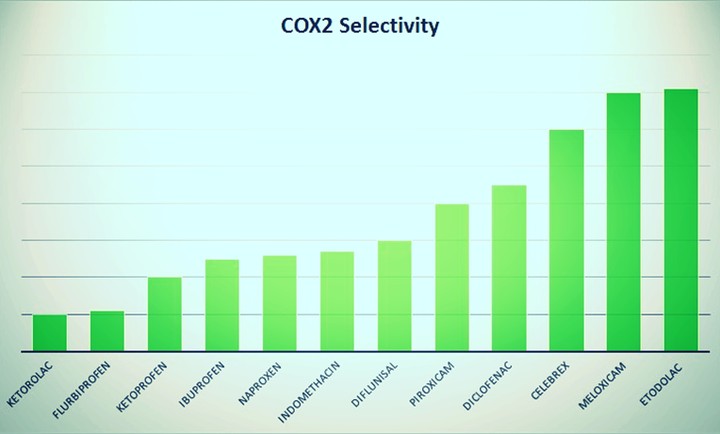Dr. Brian Staiger asked
Hello! I am confused by the term NSAID... What does it mean, what exactly are NSAIDs and how are they different than other pain medications.
Answer
NSAID is an acronym for Nonsteroidal anti-inflammatory drugs. In addition to their anti-inflammatory actions, they are also effective in reducing pain and fever.
They are typically divided into two distinctive classes: Non COX selective and COX2 selective (we will get to this in a minute). There is a wide variety of NSAID medications including ibuprofen (Advil & Motrin are brand names) naproxen (also known as Aleve), meloxicam, etodolac and Celebrex just to name a few. Each of these drugs are chemically different and placed into their own subclass under the NSAID umbrella (e.g ibuprofen is placed in the propionic acid derivatives class while meloxicam is placed in the enolic acid class) but we need not delve further into sub-classes. Just realize that while the main mechanism of action is the same for all the NSAIDs, they do vary considerably in how fast they are absorbed, how potent they are and how long they last etc...
How Do NSAIDs Work?
They inhibit an enzyme named COX (cyclooxygenase). This is an enzyme that is involved in the inflammatory pathway in the body. Block COX, and inflammation is reduced. There are two forms of the COX enzyme (actually 3, but we will focus on 2), COX1 and COX2. COX1 is found in most cells and tissues in the body including, and this is an important point, in the gastric epithelial cells (lining of the stomach).
COX2 is also in our cells and tissues, but it's ability to be detected in the body doesn't really show up unless some sort of damage occurs,then our body increases COX2 production. Now this is where selectivity comes into play. It's the non-selectivity of most of these NSAIDs (meaning they inhibit BOTH COX1 and COX2) that is thought to cause the GI side effects of this class such as ulcers, nausea and stomach pain and this provided the rationale to develop NSAIDs that are only selective for COX2, hopefully reducing the gastric side effects by leaving COX1 alone.
What Are The COX2 Selective Drugs?
While each NSAID actually varies in COX selectivity (see graph), currently only Celebrex (celecoxib) is marketed as COX2 selective in the United States. You may be aware of another called Vioxx which was removed from the market due to cardiovascular side effects.

What Are The Side Effects Of These Medications?
The most common side effects are gastrointestinal such as nausea, acid reflux and abdominal pain. The COX2 selective medications may have a slightly lesser incidence of these. NSAIDs also have some significant cardiovascular side effects which is one of the reasons why your physician may recommend against them if you have certain heart conditions or high blood pressure. NSAIDs can also affect the kidneys as well.
Is it worth it to get the prescription NSAIDs vs. OTC (Over The Counter)?
Maybe yes, maybe no. It just depends.
The most common prescription NSAID surprisingly is ibuprofen! The OTC comes in the 200mg per tablet strength while the prescription versions are 400mg, 600mg and 800mg. Depending on the cost, it may be worthwhile just to get the equivalent OTC dose.
Naproxen, which is also OTC, also comes in prescriptions strengths, so be wary of high prices on that as well.
Other than those two, it may be beneficial to get prescription NSAIDs. Some medications, such as meloxicam (which is fairly COX2 selective), are available generically and may have significantly less side effects than other non selective medications.
Certain NSAIDs, ketorolac for example, pack a pretty potent punch and good for more moderate to severe pain, but need to limited in the duration of their use.




